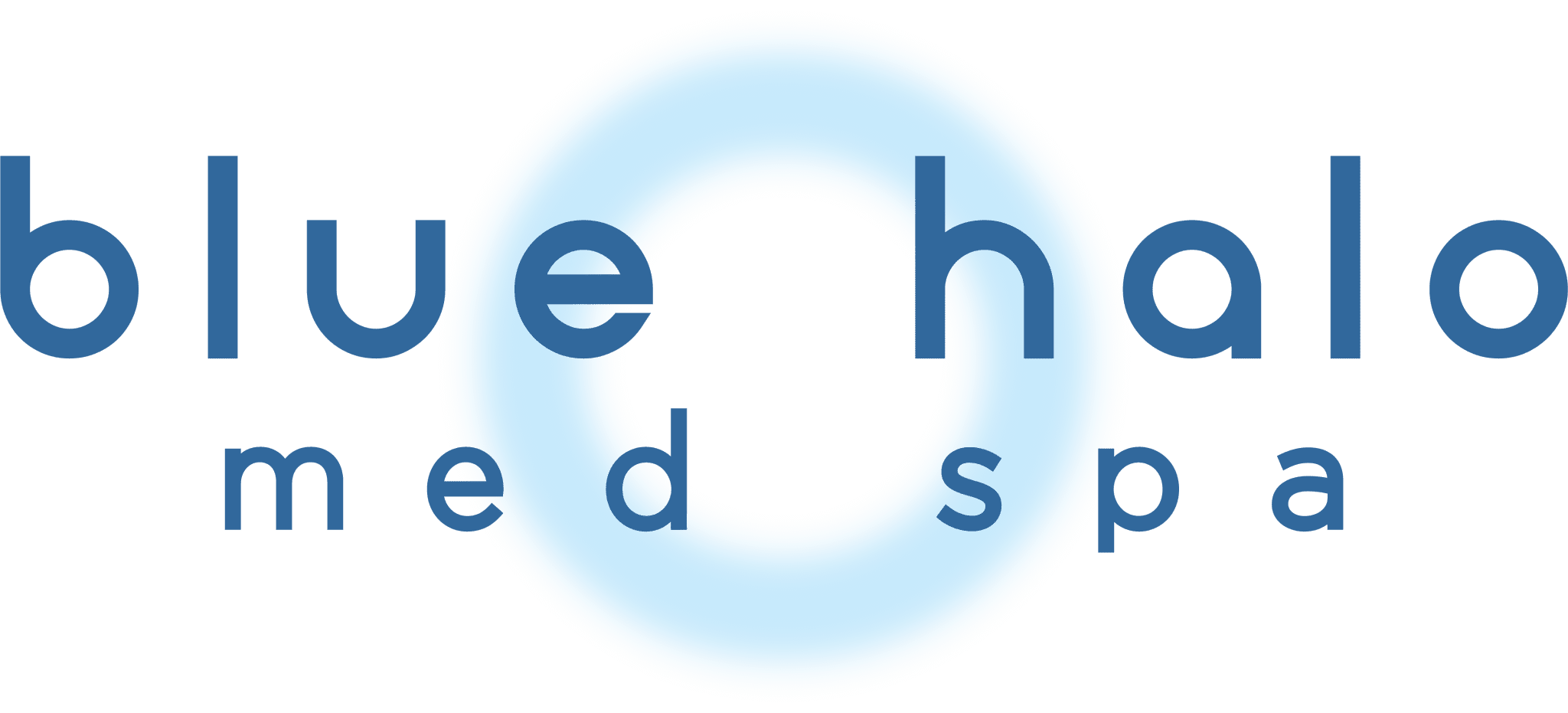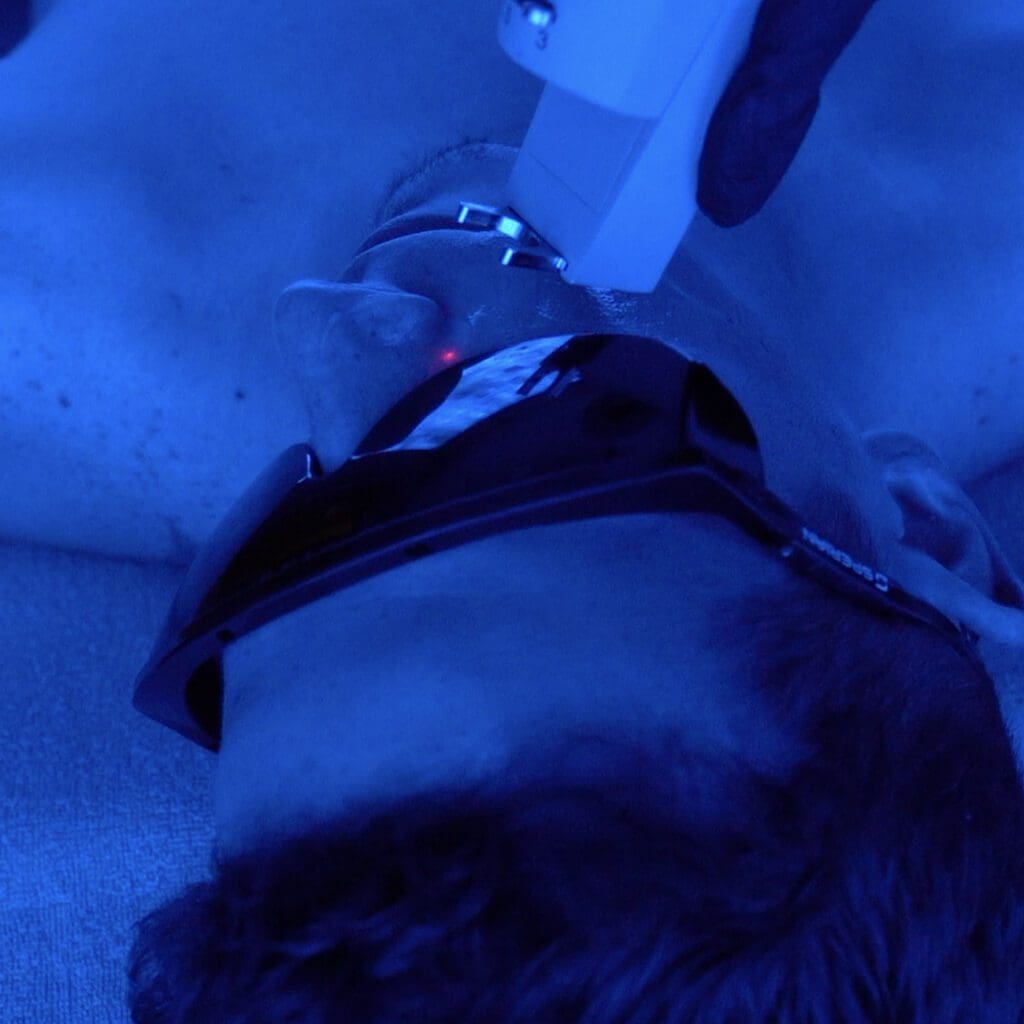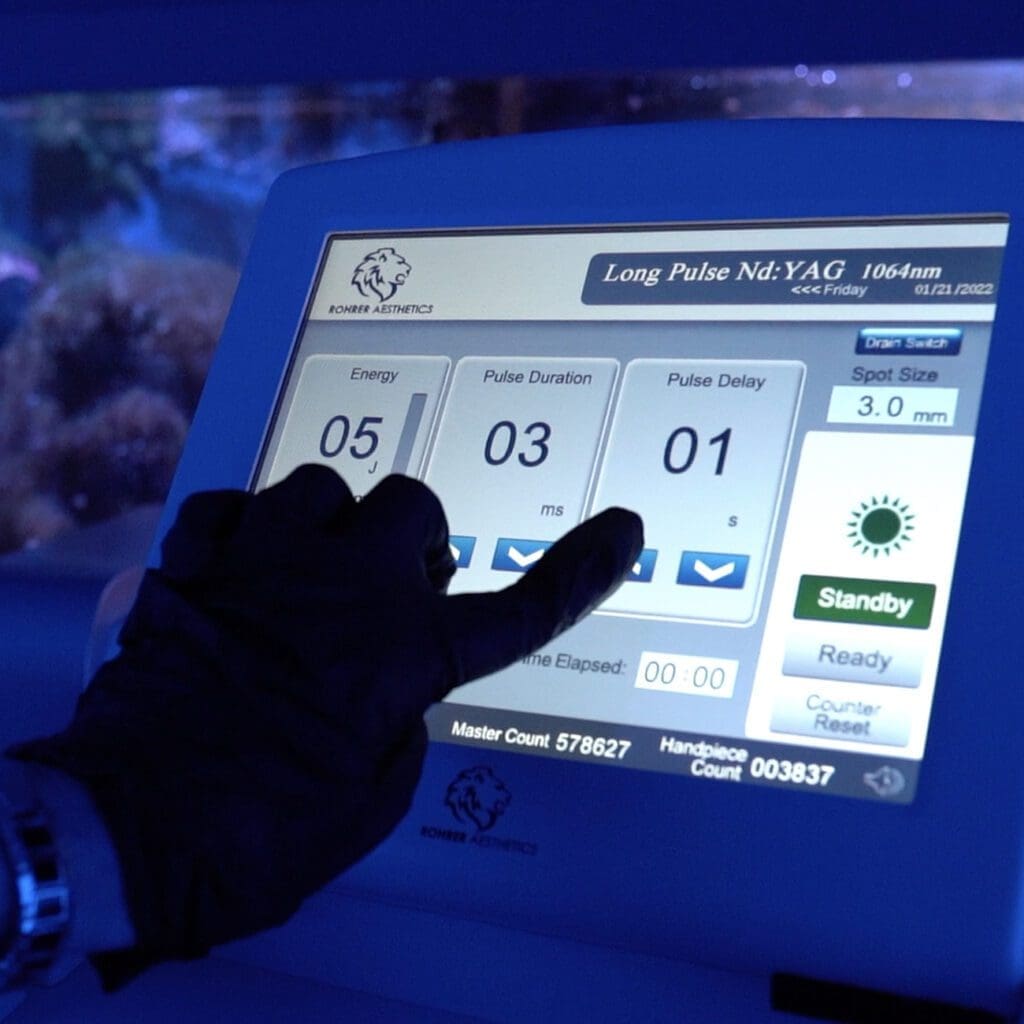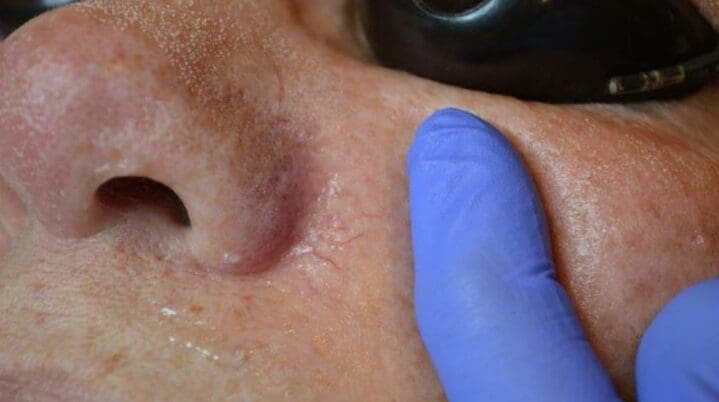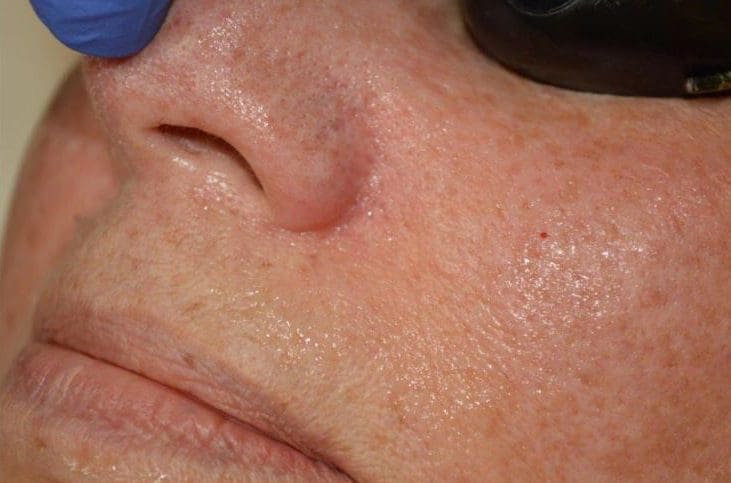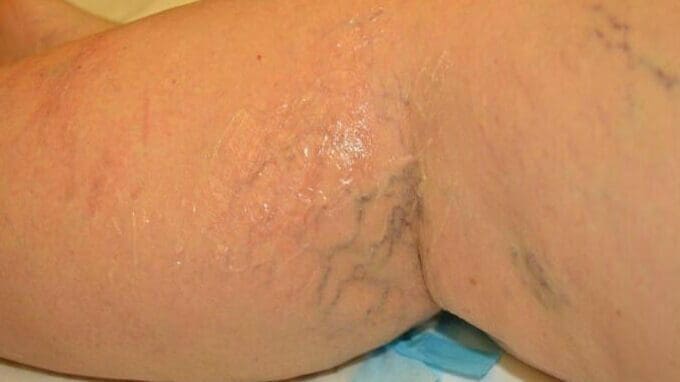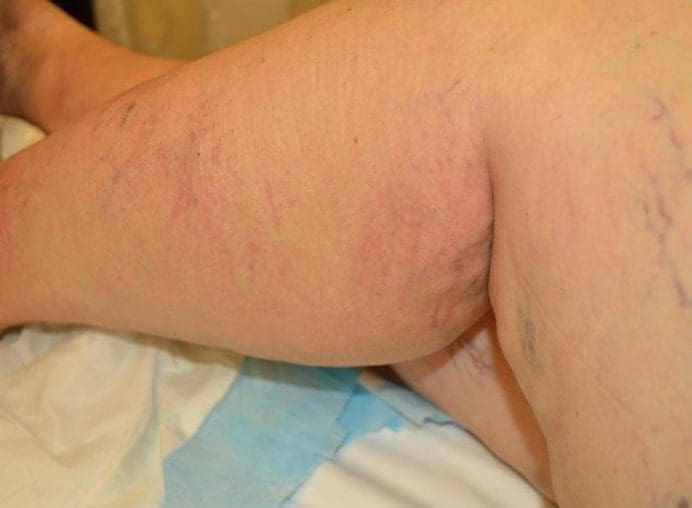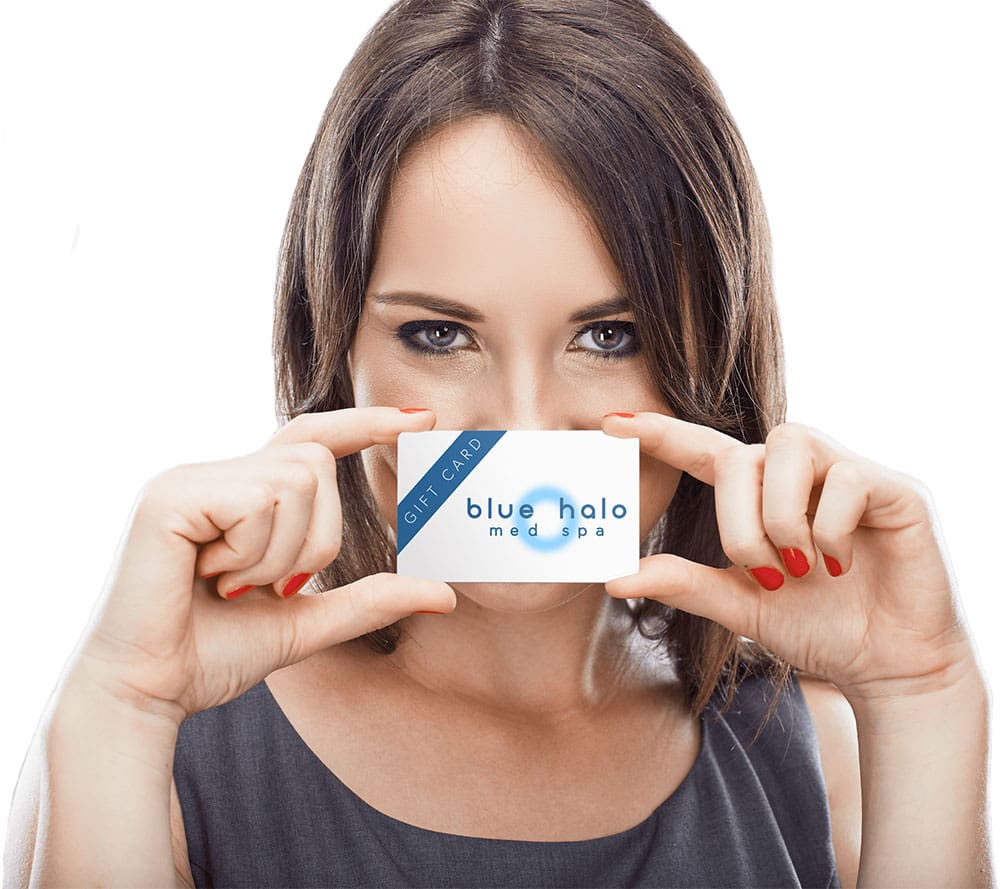Why Suffer from Unsightly Veins?
The Spectrum’s long-pulsed Yag laser will diminish the appearance of existing veins on the face and legs. Once the laser light is applied to the skin, it enters into the vein, where the energy from the laser is absorbed and the vein walls collapse and seal shut, eliminating the vein’s appearance on the skin. Eliminating veins with the long-pulsed Yag laser is quick and effective.
